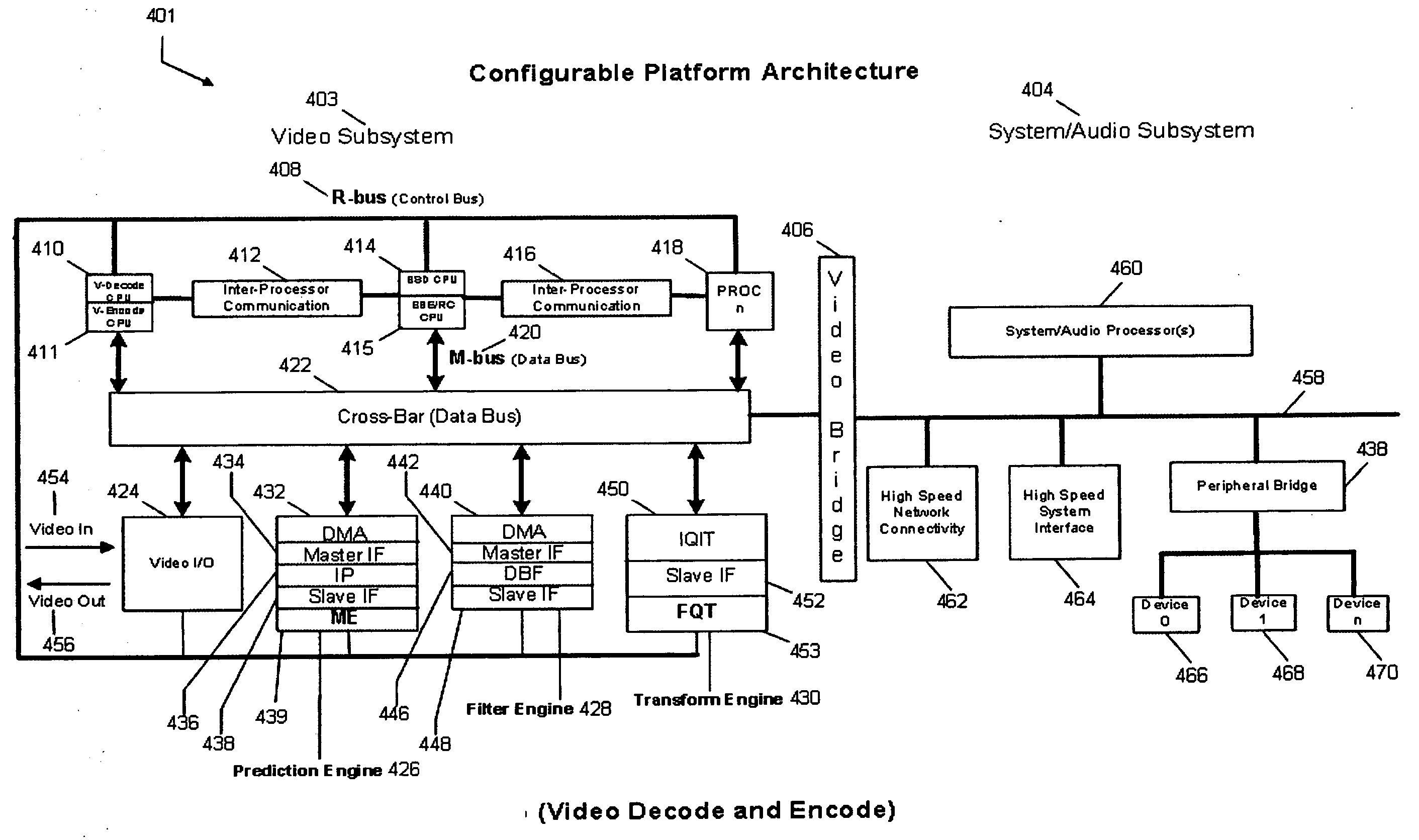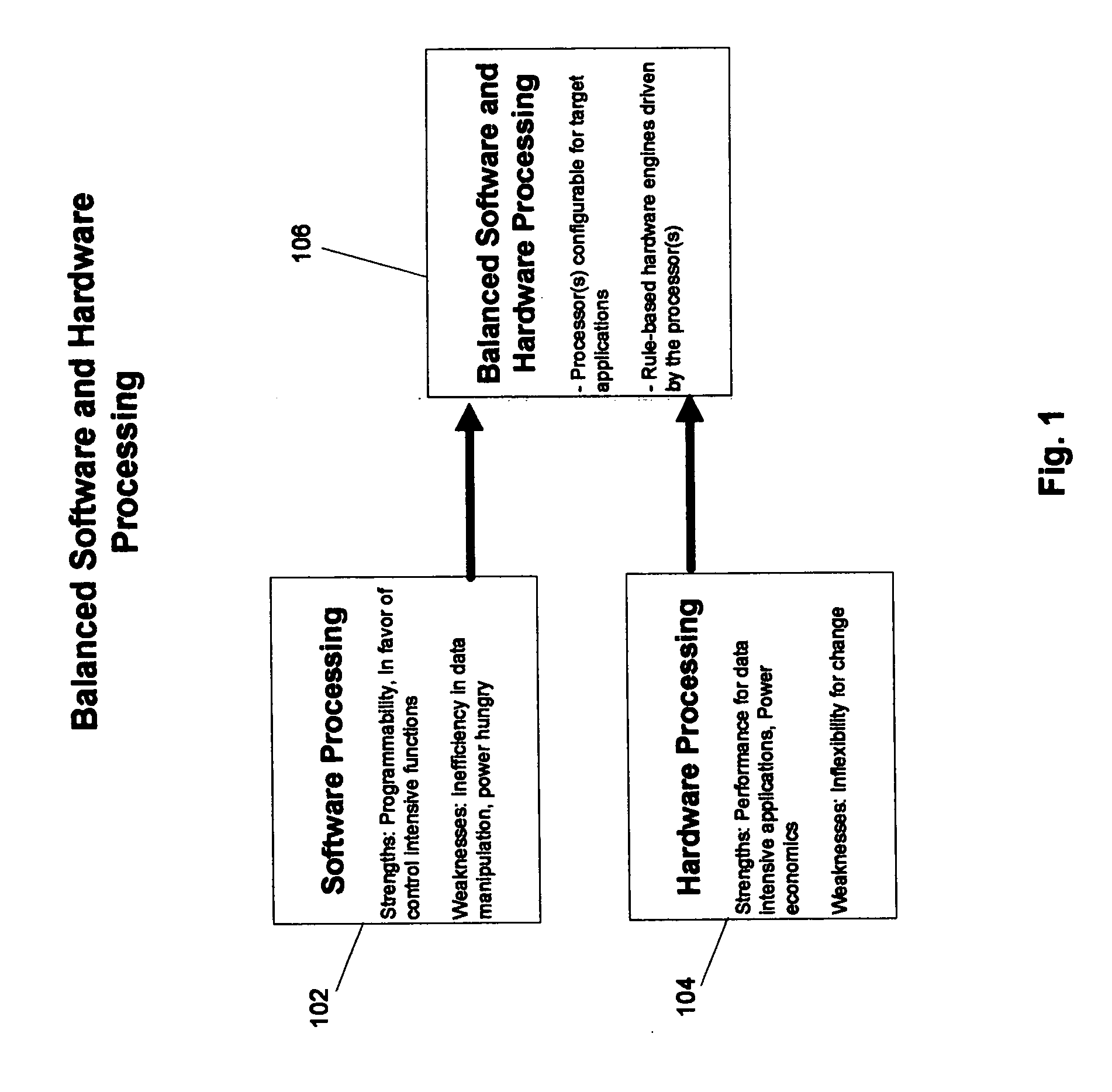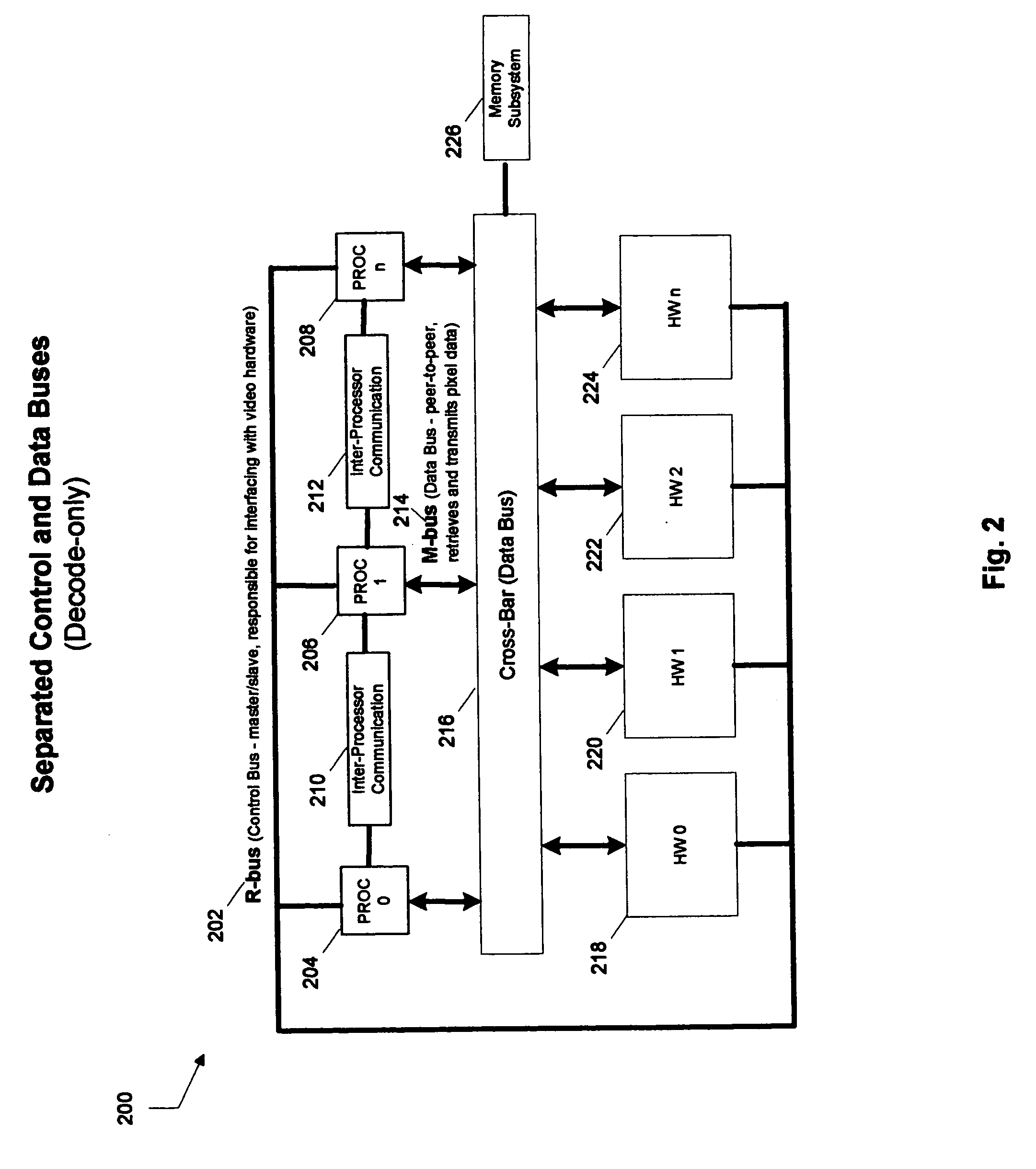Software and hardware partitioning for multi-standard video compression and decompression
a multi-standard, video compression technology, applied in the field of video compression and decompression, can solve the problems of insufficient compression with mainstream standards, inability to fully support newer standards, and no existing silicon product architecture that can implement them in a cost-effective manner, so as to maximize the flexibility and adaptability of the system, without significant hardware overhead, hardware design becomes much simpler and more robust
- Summary
- Abstract
- Description
- Claims
- Application Information
AI Technical Summary
Benefits of technology
Problems solved by technology
Method used
Image
Examples
Embodiment Construction
[0060] Referring now to FIG. 2, the system 200 of the present invention includes a plurality of busses such as the R-bus 202, the M-bus 214, and the cross-bar or data bus 216, processors 204-208, Inter-processor communication buses (IPC) 210-212, hardware engines 218-224, and a memory subsystem 226. The processors 204-208 use the R-bus 202 to interact with video hardware engines for control flow processing and the M-bus 214 for data flow processing. The R-bus 202 is a master-slave bus, while the M-bus 214 is a peer-to-peer bus connected to the system cross-bar network 216 (system interconnect as described below) to access system resources. The IPC bus 210-212 (or third bus) handles message data passing between processors. In summary, there are three major buses to facilitate all control and data flow processing. They are the IPC bus for inter-processor communications in a distributed multi-processor environment, the R-bus 202 for interaction between a processor 204-208 and hardware ...
PUM
 Login to View More
Login to View More Abstract
Description
Claims
Application Information
 Login to View More
Login to View More - R&D
- Intellectual Property
- Life Sciences
- Materials
- Tech Scout
- Unparalleled Data Quality
- Higher Quality Content
- 60% Fewer Hallucinations
Browse by: Latest US Patents, China's latest patents, Technical Efficacy Thesaurus, Application Domain, Technology Topic, Popular Technical Reports.
© 2025 PatSnap. All rights reserved.Legal|Privacy policy|Modern Slavery Act Transparency Statement|Sitemap|About US| Contact US: help@patsnap.com



